
___
Stills
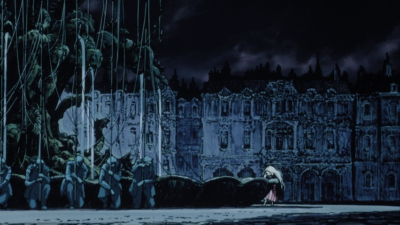
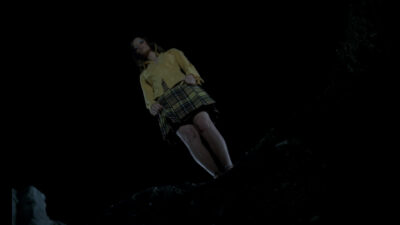
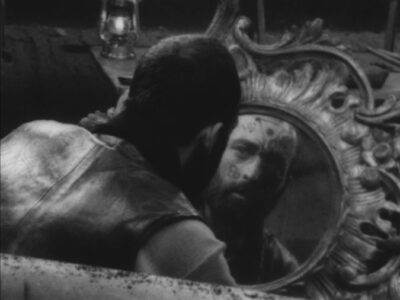
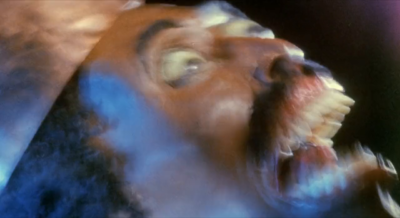
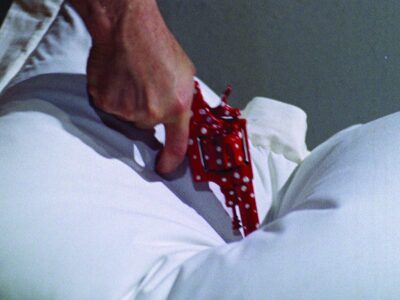
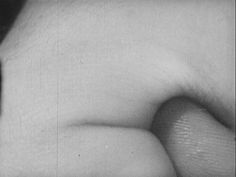
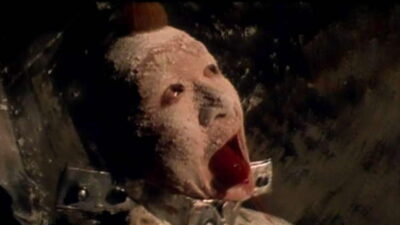
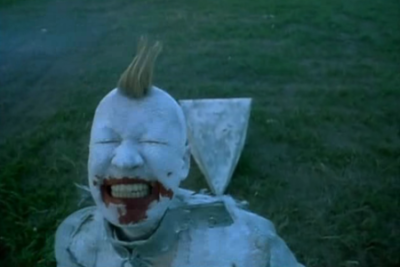


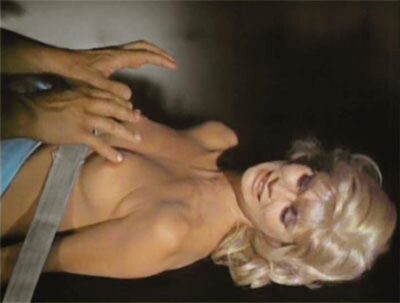


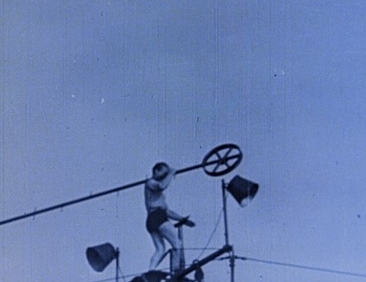

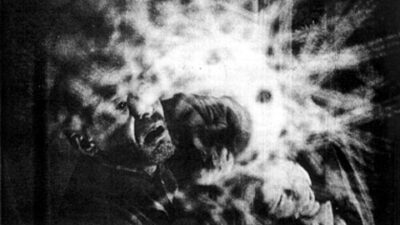


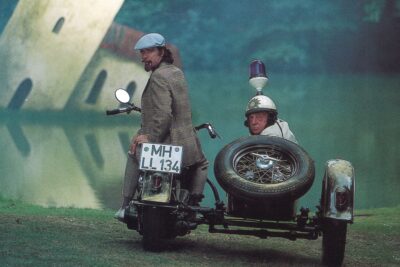
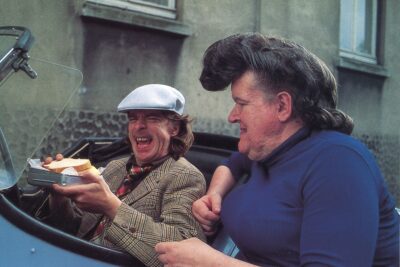

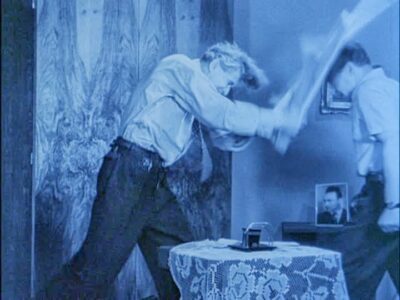
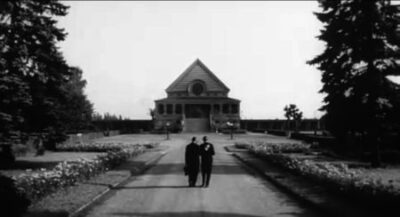
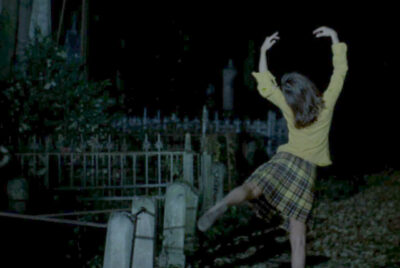

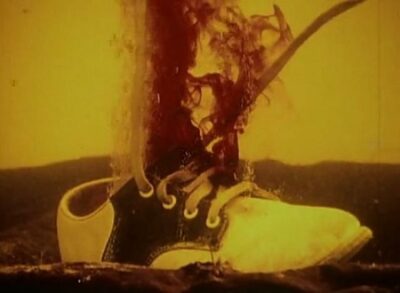


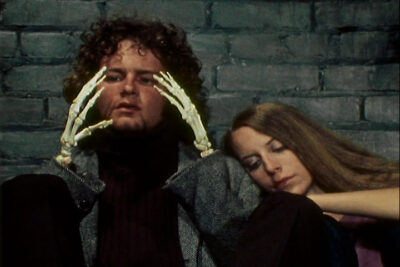
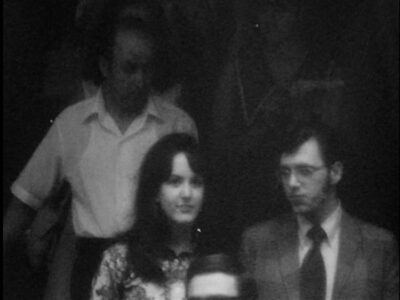
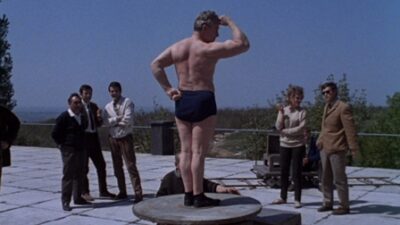


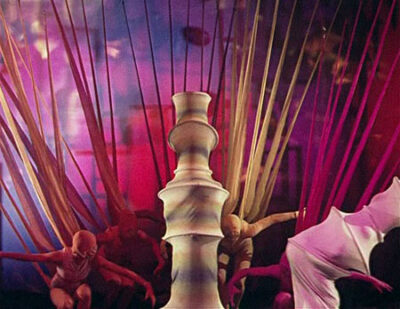
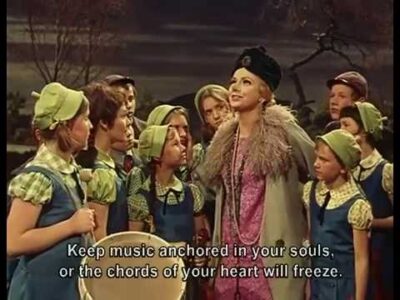
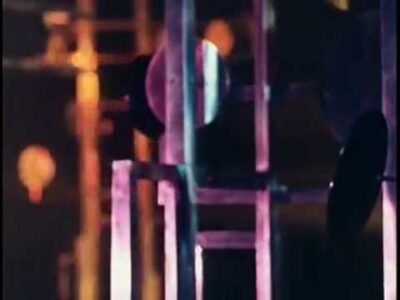

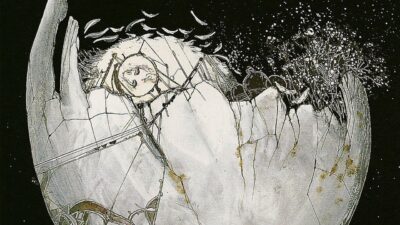
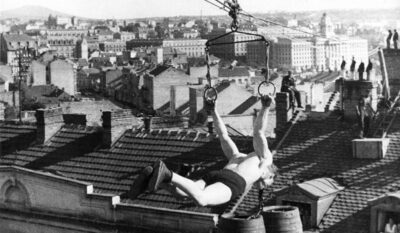

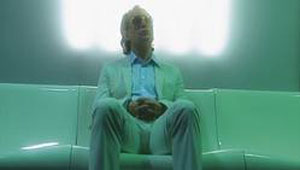

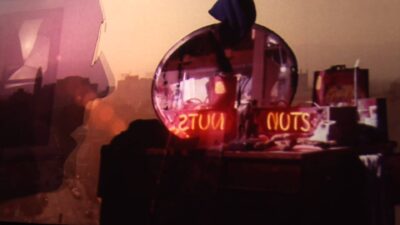
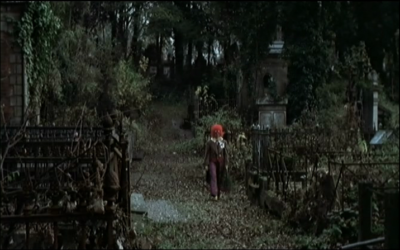
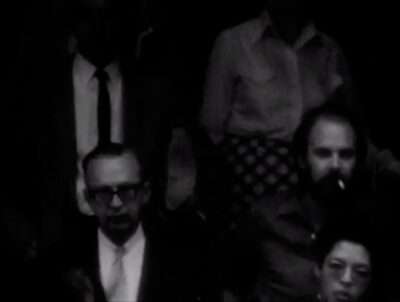
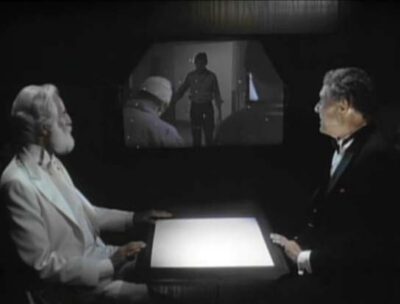
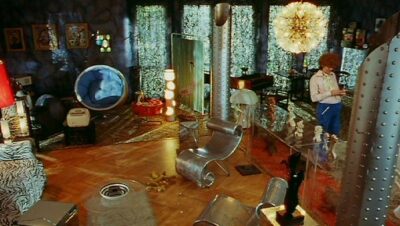
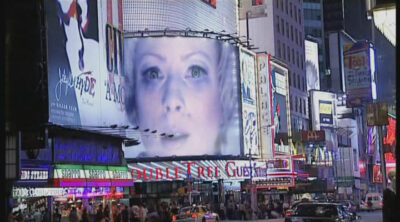
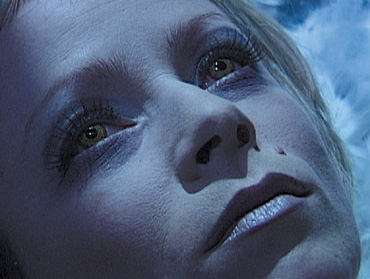


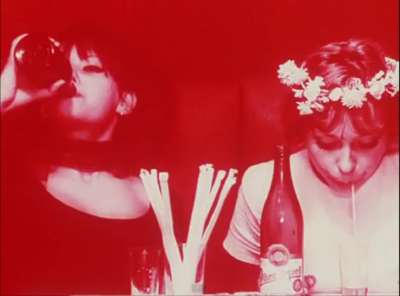
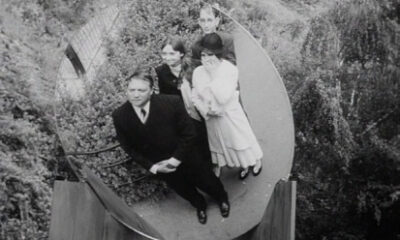
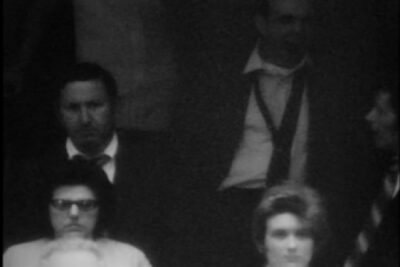
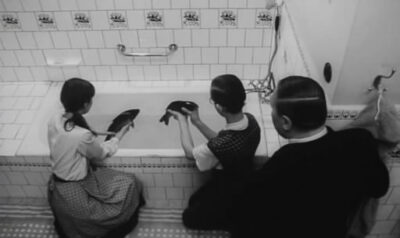
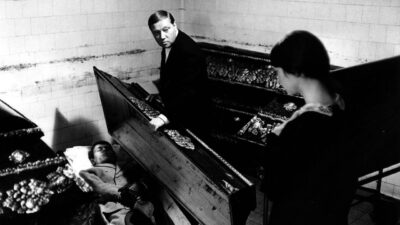
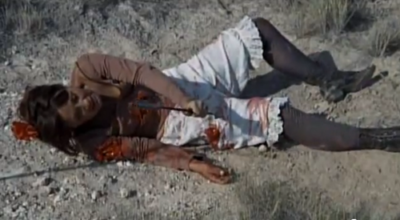
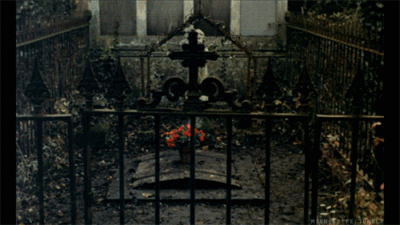

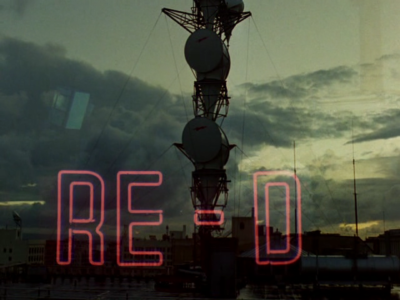

_______________
Thomas White Who’s Crazy (1966)
‘Accompanied by a frenetic original soundtrack by the great Ornette Coleman, insane asylum inmates escape their confinement and hole up in a deserted Belgian farmhouse, where they cook large quantities of eggs and condemn one of their own in an impromptu court. The actors don’t have much need for words when they can dance around, light things on fire, and drip hot wax on each other instead. Ornette Coleman and the other members of his trio – David Izenzon and Charles Moffett – recorded their score for WHO’S CRAZY? in one go while the film was projected for them, and the result feels like a bizarre silent film with the greatest possible accompaniment. The soundtrack also features a young Marianne Faithfull singing what are probably her most experimental riffs – written for her especially by Ornette – as she asks, “Is God man? Is man God?” in an original track titled “Sadness.” WHO’S CRAZY? was long thought to be lost by jazz-on-film scholars and the Library of Congress. In early 2015, the only surviving copy of the film, a 35mm print struck for the film’s debut at Cannes in 1966, was salvaged from director Thomas White’s garage after sitting on a shelf there for decades. Ornette’s soundtrack exists as a hard-to-find LP, but audiences have never before had the opportunity to see what Ornette saw when he composed it. The cast consists of actors from New York’s experimental theater troupe, the Living Theatre, who also performed in Shirley Clarke’s THE CONNECTION.‘ — Grand Motel
Trailer
_______________
Teinosuke Kinugasa A Page of Madness (1926)
‘Though the synopsis of the plot doesn’t really do justice to the movie — a retired sailor who works at an insane asylum to care after his wife who tried to kill their child — the visual audacity of Page is still startling today. The opening sequence rhythmically cuts between shots of a torrential downpour and gushing water before dissolving into a hallucinatorily odd scene of a young woman in a rhomboid headdress dancing in front of a massive spinning ball. The woman is, of course, an inmate at the asylum dressed in rags. As her dance becomes more and more frenzied, the film cuts faster and faster, using superimpositions, spinning cameras and just about every other trick in the book. While Kinugasa was clearly influenced by The Cabinet of Dr. Caligari, which also visualizes the inner world of the insane, the movie is also reminiscent of the works of French avant-garde filmmakers like Abel Gance, Russian montage masters like Sergei Eisenstein and, in particular, the subjective camerawork of F. W. Murnau in Der Letzte Mann. Kinugasa incorporated all of these influences seamlessly, creating an exhilarating, disturbing and ultimately sad tour de force of filmmaking. The great Japanese film critic Akira Iwasaki called the movie “the first film-like film born in Japan.”’ — Open Culture
the entire film
____________
George Barry Death Bed: The Bed That Eats (1977)
‘In 1972, some guy named George Barry got a camera and some film. What happened was Death Bed: The Bed That Eats. An incredibly bizarre mix of horror, sexploitation, avant-garde technique and arthouse, Death Bed was shot in 1972 but a print wasn’t struck until 1977. It then disappeared. before being rediscovered in 2003 and released on DVD, it gained a cult following when bootlegs made from a rare UK VHS/Betamax copy of the film began circulating. Director George Barry reportedly forgot about the film before he came across said bootleg found on a horror movie forum.’ — collaged
the entire film
_____________
Standish Lauder Necrology (1969)
‘Lauder’s film is a continuous shot of the anonymous faces of evening commuters in New York’s Grand Central Station. The film was made with a stationary camera pointed at a down escalator, and then the film was run backward, creating an effect of expressionless faces rising towards the heavens. Legendary filmmaker Jonas Mekas remarked of Necrology, “It is one of the strongest and grimmest comments upon the contemporary society that cinema has produced.”’ — Andris Damburs
the entire film
_______________
Helge Schneider 00 Schneider – Jagd auf Nihil Baxter (1994)
‘The funny clown Bratislav Metulskie is found dead in circus “Apollo”. The retired commissioner 00 Schneider is asked to assume control of the case. Schneider and his aged sidekick Korschgen investigate to find the murderer. Nihil Baxter, a passionate art collector who is a little nuts and does not cultivate social contacts at all. Commissioner Schneider investigates at the circus and pays Baxter a visit. Baxter makes up an alibi and claims that he was working on a painting when the murder took place. The Sidekick Korschgen finds out that the picture is an imitation. When Baxter tries to escape to Rio by plane after he stole a sculpture from the practice of Dr. Hasenbein 00 Schneider and his sidekick are also on board. As they are incognito they are able to arrest the criminal with the help of the world famous “sniffer dog nose” pilot.’ — collaged
the entire film
_______________
Dušan Makavejev Innocence Unprotected (1968)
‘“Narrative structure is prison; it is tradition; it is a lie; it is a formula that is imposed,” Dušan Makavejev once said. The Serbian filmmaker, who rose to cinematic fame or infamy (depending on who you ask) in Communist Yugoslavia in the sixties and early seventies, believed in breaking all the rules. Through collage and juxtaposition, Buñuelian absurdity and sexual confrontation, Makavejev freed narrative cinema from all oppressive norms. This utterly unclassifiable film is one of Makavejev’s most freewheeling farces, assembled from the “lost” footage of the first Serbian talkie, a silly melodrama titled Innocence Unprotected, made during the Nazi occupation; contemporary interviews with the megaman who made it and other crew members; and images of the World War II destruction, and subsequent rebuilding, of Belgrade. And at its center is a (real-life) character you won’t soon forget: Dragoljub Aleksic, an acrobat, locksmith, and Houdini-style escape artist whom Makavejev uses as the absurd and wondrous basis for a look back at his country’s tumultuous recent history.’ — The Criterion Collection
Excerpt
______________
Oliver Herrmann One Night, One Life (1999)
‘Oliver Herrmann was quickly proving to be an artist of provocative potential after creating the innovative short films Dichterlieb (2000), One Night, One Life (2002), and Le Sacre du Printemps (released 2004). Tragically, Herrmann’s life and career were cut short when he died of a diabetic stroke at the age of 40 in 2003. Herrman’s film of Arnold Shoenberg’s “Pierrot Lunaire,” is conducted by modern music specialist Pierre Boulez and starring Schäfer. A bit of history may be needed for Schoenberg’s atonal, expressionist melodrama. Set to Albert Giraud’s text, the poems, usually spoken by a soprano, are delivered in “Sprechgesang” (spoken singing). Upon its 1912 premiere, “Pierrot Lunaire” predictably offended the traditionalists. Much publicity was made about it, mostly bad, but at least this was a period when new music and new composers actually grabbed headlines. As late as the 1970s, conservative NY Times music critic Harold C. Schonberg claimed that “Pierrot Lunaire”‘s’ failure to enter the standard repertoire was an indictment of contemporary music. Yet, the 21st century has (somewhat) rendered Schonberg’s assessment as premature. If not quite part of the daily repertoire diet, “Lunaire” is extensively recorded and performed. One might envision it someday becoming as commonplace as Beethoven. However, together, Herrmann, Boulez, and Schäfer produce a commendable effort to rectify its potentially harmful respectability. The proof is in the pudding as far as music forum reviews go, with the hopelessly puritan music fans expressing outrage towards Herrmann’s blasphemous filming of music that was labeled blasphemous in 1912.’ — Alfred Eaker, 366 Weird Movies
the entire film
_______________
Mauricio Kagel Hallelujah (1969)
‘Mauricio Kagel spent nearly the entirety of his career in Germany – arriving in 1957 at the age of 26, and remaining more or less for the rest of his life. He was born and raised in Argentina – the son of two Russian Jews who had fled persecution in the pogroms in 1920. Though nearly his entire body of work was made in Europe, it is filled with a spirit distinct to Latin America – one which embraces risk, metaphor, absurdity, and humor far more than its international counterparts. With his peers Karlheinz Stockhausen, Luciano Berio, Iannis Xenakis, and György Ligeti, Kagel occupies a significant place within the cannon of 20th Century avant-garde Classical Music. The convenient overlooking of the fact that he was not European, assertively housing him within that tradition – over Latin America’s, indicates a larger condition favoring a single narrative, while neglecting others. It is in effect, a strange twist on cultural appropriation. Kagel produced roughly a film a year for his entire career. That he managed to produce anything else, particularity in the face of their ambition, is an astounding testament to how ambitious and prolific he was. A friend recently reminded me of a different era in the life of these films. He had first obtained them as a dub from Helen Mirra, who had dubbed them from Jim O’Rourke. There was a moment when they were quite obscure, and passed from hand to hand. It’s wonderful that we now live in a world – the result of things like Youtube, which has returned them to the life which the composer would have preferred – available to all.’ — The Criterion Collection
the entire film
______________
Mamoru Oshii Angel’s Egg (1985)
‘When people talk about something as having multiple interpretations, there’s almost always one “master” interpretation of the material that bubbles to the top and gets stuck there. The more movies and shows I watch, even those not designed to be an open-ended viewing experience, the more I feel it’s best to leave all such theories out of the picture until you’ve formed an outlook of your own. A movie should be a viewing experience first and a theory-forming exercise second, doubly so if the first viewing yields up not a storyline or even a theory, but a mood. Mamoru Oshii’s Angel’s Egg is so heavily charged with meaning and symbolism, it practically dares you to make something of it. It seems foolish to write about the film without producing something akin to the I-think-this-means-that essays that swirled in the wake of Stanley Kubrick’s equally enigmatic 2001: a space odyssey. Surely the whole point of talking about a movie this heavily symbolic is to talk symbolism, right?’ — Ganriki
the entire film
_______________
Gian Carlo Menotti Help, Help, the Globolinks! (1969)
‘In this children’s opera, the world has been invaded by bizarre alien creatures named Globolinks, who are allergic to music. A bus full of children returning to boarding school breaks down in the middle of a lonely forest, and the students are surrounded by the alien creatures. Meanwhile, back at the school, the headmaster is infected by one of the aliens, meaning that he will soon turn into a Globolink himself. A children’s opera about music-loathing aliens is lready presumptively pretty weird. But when the opera is made in 1968, at the height of the psychedelic sixties, and utilizes all the camera tricks, distorted electronic noises, and bizarre set designs Summer of Love filmmakers developed in an attempt to mimic the disorienting effects of LSD, there’s no more need for the presumption–we’re definitely caught in a very weird nook of film.’ — G. Smalley, 366 Weird Movies
the entire film
_________________
Pat O’Neill Water and Power (1989)
‘Water and Power is one of the most significant experimental films to come out of the 1980s, winning a Sundance Grand Jury Prize in1990 and being selected to the National Film Registry of the Library of Congress in 2008. Requiring almost a decade of work, the film is a true city symphony to the Los Angeles Basin. Like Roman Polanski’s Chinatown, the core focus of the film is the relationship of water, in all its forms, to the duplicitous undercurrents of this desert town. O’Neill implies a history of a frontier town, superimposing text and surrealist vignettes over wide vistas of the urban streets of LA and the landscape of Owens Valley, a main water source for the downtown area that is becoming increasingly sucked dry. The size and resolution of the 35mm film image provides a massive canvas for O’Neill’s incredibly precise optical printing work. The baselines for many of his compositions are time-lapsed landscapes, shot on a motion-control camera that allows precise movements to be duplicated in other locales. On top of these, O’Neill layers hi-contrast, ghostly figures performing surrealistic repetitive actions in a derelict downtown office, drawing historical and metaphoric parallels to the landscape being shown. The images are sutured together under the spell of George Lockwood’s beautiful sound design, layering snippets from B-movies, sound effects and a plethora of musical genres over the visual field.’ — aafimfest.org
Excerpt
Excerpt
________________
Věra Chytilová Les Petites Marguerites (1966)
‘The unconventional Les Petites Marguerites (aka “Daisies”) was the product of an unconventional filmmaker. A former philosophy and architecture student, Chytilová enrolled at FAMU in 1957, the only female in her class. There she discovered a love for improvisation, nonprofessional actors, and cinema verité—anything that rejected the idea of film as an exact science. Daisies incorporates all this and more in a wildly experimental narrative that is considered the movement’s singular feminist statement. Although Chytilová has denied that it was her intention to make a feminist film per se, it’s easy to see why decades of scholarship has made this assertion. The two teenage protagonists, Marie I and Marie II (Jitka Cerhová and Ivana Karbanová, neither of whom had any acting experience), refuse to play by the rules of the patriarchal culture around them, spending the film’s seventy-odd (very odd) minutes tearing up the world: exploiting weak-willed older men, consuming enormous amounts of food and drink, wreaking inebriated havoc, and finally descending into pure annihilation. In one of the film’s most famous sequences, they gleefully cut up a succession of phallic objects (bananas, sausages, bread rolls) with scissors. Chytilová ensures that something unexpected occurs in virtually every shot and edit, juxtaposing images with dissonant sounds, abruptly changing color filters within scenes, and fragmenting many sequences through unmotivated montage.’ — Michael Koresky
Trailer
Excerpt
Excerpt
_______________
Shozin Fukui 964 Pinocchio (1991)
‘Pinocchio 964 is a memory-wiped sex slave who is thrown out by his owners for failure to maintain an erection. It is unclear in what ways he has been modified beyond having no memory and being unable to communicate. He is discovered by Himiko while wandering aimlessly through the city. Himiko has also been memory-wiped, possibly by the same company that produced Pinocchio, but she is fully functional. Himiko spends her days drawing maps of the city, to aid other memory-wiped people. Himiko takes Pinocchio home and tries to teach him to speak. After much effort he has a breakthrough and finally becomes aware of his situation. At this point his body erupts in an inexplicable metamorphosis and it becomes clear that his modifications were much more involved and esoteric than simple memory loss. Himiko also begins to transform, though in a much more subtle manner.’ — letterboxd.com
the entire film
_______________
Willard Maas Geography Of The Body (1943)
‘Extreme close-ups of nude male and female bodies, taken through a magnifying glass bought at a dime store, are combined with a surrealist text written and read by poet George Barker. The poem, in Barker’s deadpan reading, comments humorously on the body parts, which are photographed in such tiny detail that they appear as landscapes. Geography of the Body was the first widely distributed underground art film, and was a regular fixture of the campus art film circuit for years. Although by the year 2000 it appears as a relatively quaint antique (and is in serious need of preservation assistance), Geography of the Body was easily as influential in its day as Maya Deren and Alexander Hammid’s Meshes of the Afternoon, made the same year.’ — Ubu
Excerpt
Excerpt
Excerpt
Excerpt
_____________
Djouhra Abouda and Alain Bonnamy Ali in Wonderland (1976)
‘Miraculously blending styles of militant polemical and experimental essay filmmaking, ALI IN WONDERLAND speaks to the struggle of Maghrebi workers in Paris in the 1970s. Djouhra Abouda and Alain Bonnamy made the film in their twenties, as participants of the Centre Universitaire de Vincennes – a leftist cinema collective formed in the aftermath of the May 1968 uprisings. Fully living up to their stated intention to imbue images “like blows of the fist” upon the film’s viewers, Abouda and Bonnamy paint a visceral and unforgettable portrait of migrant exploitation as it manifests (whether in history or today) in western urban capitals – essential viewing alongside Spectacle favorites like Sidney Sokhona’s NATIONALITE: IMMIGRE and Madubuko Diakite’s THE INVISIBLE PEOPLE. Formally playful yet ferociously political, ALI IN WONDERLAND is among the most important Francophone films of the (increasingly so-called) postcolonial era, yet has been unavailable to see for decades.’ — Spectacle
Trailer
_____________
Juraj Herz The Cremator (1969)
‘In this mesmerizing, avant-garde Gothic horror film, a funerary specialist becomes obsessed with what he believes to be the nobility of his calling, with terrifyingly tragic and bizarre results. The production design is crisp and symmetrical. Stanislav Milota’s stunning black and white cinematography is haunting and beautiful. It features successions of extreme closeups that emphasize the slightly grotesque and disturbing features of the biological condition. Milota’s use of black and white film stock’s enhanced tonal range is artfully employed to focus attention on rich textures and multitudes of shades. This gives The Cremator a uniquely unsettling dreamlike quality. The musical score by Zdenek Liska is alluring, phantasmic, and aesthetically intriguing. Viewing The Cremator is akin to experiencing a nightmare that one is reluctant to wake from.’ — Pamela de Graff, 366 Weird Movies
the entire film
______________
Jean Rollin The Iron Rose (1973)
‘THE IRON ROSE is a haunting experience – a macabre tone poem about youth and age, love and nihilism, nostalgia and superstition, and, above all, life and death. Francoise Pascal (There’s a Girl in My Soup) and Hugues Quester (Three Colors: Blue) go on a metaphysical, Orpheus-like journey inside an ancient, all-but-abandoned graveyard but, as night falls, they cannot find their way out. As Quester’s nihilism crumbles to impatience and terror, Pascal transfers her disappointed passion for him to the cemetery itself and becomes jubilantly (and dangerously) attuned to its dead. Pascal gives a remarkably intuitive performance, at times so spontaneous in spirit, one cannot imagine how parts of it were ever scripted. The cemetery itself is analogous to Rollin’s love for all things antiquarian, including the old train station and the nearly moribund city of Amiens. If Orson Welles was correct when he estimated that a film could only be considered good to the extent it represented the artist who made it, THE IRON ROSE is Jean Rollin’s first authentic masterpiece.’ — Tim Lucas
the entire film
_______________
Jay Schlossberg-Cohen Night Train to Terror (1985)
‘God and Satan are riding on a train at midnight. Looking out the window, they watch three stories, and debate the eternal fate of the protagonists. All the while, a teen pop/rock band is acting out a music video in a nearby compartment. Inspired by the box-office success of horror anthology movies like Creepshow (1982) and Twilight Zone: The Movie (1983), Night Train to Terror tries to hop a ride on the omnibus gravy train. Rather than shoot new stories specifically for this movie, however, the producers decided to save time and money by cutting unreleased full-length features they already owned the rights to into twenty-five minute segments. Needless to say, the results of this hacksaw editing, which consistently sacrifices narrative for nudity and gore scenes, are incoherent. The expository sequences with a hammy God (“I shed my mercy on them, as I do the gentle rain”) and hammier Satan (“there is no evil so vile which man will plunge himself into”) on a cosmic train judging the characters adds an additional layer of bizarreness. But, it’s the upbeat teen New Wave band shooting a music video in the next train compartment that sends the movie off the tracks and plunging into a void of pure weirdness.’ — G. Smalley, 366 Weird Movies
the entire film
*
p.s. Hey. Years ago Terry Ratchett, who’s a reader of this blog, made a post showcasing some relatively obscure avant-garde films, and he has returned with a sequel. You must know of my love for experimental film by now, so, naturally, I’m thrilled and grateful, and here’s hoping the blog has managed to draw you into an interest in such films, if you weren’t into them already, and that you’ll be pleased to some degree as well. Please say something to Terry today or at least thank him for his generous efforts, and, of course, thank you a lot, Terry, from yours truly. ** CAUTIVOS, Hi. I read a book of stories by Adam Haslett called ‘You Are Not a Stranger Here’, which I liked, but that’s all I’ve read by him. What’s the book of his you liked so much? In Paris, everything’s pretty expensive, but not as expensive as in Los Angeles, yow. ** Sypha, Hi, James. Thanks for the list. We have a few commonalities. I really need to start the habit of reading Snuggly’s output. I’m massively far behind re: them and theirs. HNY! ** ellie, Hey. If I notice someone geeking out, I’ll definitely up to him or or them and say hi. Luckily Theo’s on Facebook too, which is my only social media, so I get to follow his trajectory there. I haven’t heard the new Galas yet. Um, no, I can’t precisely remember my Genet diss. I think it was at a time when I thought his work was too narcissistic and fussy, but I don’t feel that way anymore. The new film is about a family who builds a haunted house attraction in their home which occasions a bunch of scary, tragic, funny things. Ooh, guro with code aesthetics? Those seem like magic words to me. De-mush your brain, although it didn’t seem mushy in your comment. Thanks for the link! Everyone, Here’s a new thing by the mega talented ellie for your to read and absorb called ‘TEDDY (ANATHEMA PRODUCTION LINE). Hit it! Cool title! ** _Black_Acrylic, HNY to you, B! My NYE was a nothing other than being woken up at the appropriate point by people in my building counting down in French at the tops of their lungs. ** Misanthrope, Belated HBD to that rapscallion David. Dude, I knew absolutely zip about American football when I lived in the States too. HNY to you, bro. Seems like a possible goodie so far. ** alex, Hi, alex. It sounds like we’re on the same writing page, yes. I tend to spend at least 80% of my time revising and editing, which is easily my favorite part. Meet Derek if you can. He’s amazing and a total sweetie. No, ‘United States …’ has sound, but it’s all just the natural sounds, no dialogue or anything, although I think you hear what’s on a radio in a couple of scenes. I still haven’t seen ‘Crimes of the Future’ for no real reason. Just a total oversight that I need to correct. Bresson, my personal god! I’m obviously thrilled that you’re watching all of his films. Amazing. I love ‘Four Nights…’. It’s his funniest film, not that it’s not mostly other things. I spent a whole evening some years ago talking with the guy who played the main character in the film. A real life’s highlight. In real life, he’s a physicist. Yeah, I have friends who also have violent dreams. It’s just kind of strange because I don’t think I’m a particularly stressed out or secretly tortured person or anything, But who really knows. Meditation seems like a really good daily must-do. I’ve tried a few times, but I could never get my mind to stop racing all over the place. Drat. ** Philip Hopbell, Hi, Philip! A very happy New Year to you too! Yeah, I’m still here doing this crazy thing. Surprises me too. 14 weeks in Paris? Why? Or well, why not? If our times here align, hit me up and let’s have a coffee or something. Take care. ** Ian, My total and great pleasure, man. I hope you’re greatly enjoying the stay at home stint. ** Nick., Hey, Nick, happy ultra-fresh 2023! It was just a normal day for me. No big. I’m pretty shy too. I’ve just learned how to fake not being shy because of the public stuff I have to do. Being shy and obsessive at the same is probably a lifesaver. Mm, yeah, tell me more specifics about that boy if and when you want, but, in general, honestly, using the power of the frenzy as fuel for writing is my go-to survival method. It doesn’t necessarily solve the problem, but at least you can get something valuable out of it that way? Is your year starting excitingly? ** h now j, Hey! HNY to you too! Thank you so much! The blog is going to be on- and offline soon for a while while I’m making the but film, but hopefully your visit will line up. Best of luck with everything you have and want to do. ** Robert, Hi, Robert! Good to see you! HNY!!! I missed the fireworks but they looked like they must’ve been pretty okay based on the youtube clips. Hugs. ** Paul Curran, Great, big, massive, voluminous, seething New Year to you and yours, Paul! ** ShadeoutMapes:O, Hi! Excited for your book poems in progress. And two Dead poems only increases that. How did your script work go or how is it still going? A possum? Wow. Here in Paris the only other species visitors are pigeons or rats. ‘Watamote’ sounds familiar. I’ll check. Oh, I don’t really remember how I got into to manga, to be honest. I think a friend must’ve either leant me a manga or given me one as a gift or something. Being not especially talkative and overly sensitive and kind of a hermit only helps when you’re a writer, trust me. You know what they say: an interesting person is a question. You don’t have to ask. ** Nick Hudson, Hi, Nick! I’m psyched to get through all the work still ahead and actually make the film. HNY! That’s funny, while you were watching ‘Nostalghia’, I was watching Hollis Frampton’s ‘Nostalgia’. What were the odds. Everyone, the superb and increasingly legendary musical artist and writer Nick Hudson wrote a thing on his blog about 2022 that I think you probably would like to read. It’s here. Sure, send your novel, thank you! Big warning, though: My brain is consumed by all the things Zac and I need to do to get ready to shoot our film and then the shoot will immediately take over, so I’m going to need to be about 90% output and 10% input until mid-April, so it will undoubtedly take me quite a while read the novel. But if that’s okay, yes, and thank you again. My next days are just film stuff: working on the budget, trying to find a DP and related crew, organising performer auditions, etc. etc. No huge fun, but utterly necessary. Enjoy the traveling and land home safely. ** Steve Erickson, Hi. Promising next weekend you have there. I don’t remember the ‘Jar or Flies’ album in particular. I do think their kind of guitar-borne Gregorian Chant vibe thing was definitely one of the most interesting manifestations of the grunge area. ** Dominik, Hi!!! Ha ha, you too! Yeah, I agree on the reality show front. Can you believe that I’ve never watched ‘Drag Race’? Something about it has always made me suspicious, I’m not really sure what. You always see the same escort/slave linguistic highlights that I do! Maybe you should guest edit one of those posts, ha ha. Before you say yes you should probably say no because they’re actually a ridiculous amount of work. Love ordering your bed not to eat you, G. ** Bill, Agreed! Nope, skipped the fireworks. I like fireworks probably more than the next person, but I guess I like my sleep cycles more. I watched the documentary about King Crimson (pretty interesting) and ate a chunk of very dark chocolate and, like you, hit the sack. Happiest 2023, buddy! ** Right. Please enjoy Terry’s film program, and I will see you tomorrow.




 Now available in North America
Now available in North America 
Hi!!
I know zero of the above films and as the day seems to be really quiet work-wise, I have the chance to rectify that immediately. Thank you, Terry!
I liked the old(er) seasons of “Drag Race” quite a lot; I’m really interested in drag, and I used to enjoy all the huge personalities and the extent of their creativity. But in recent years, I’ve had the distinct feeling that the show’s only about money and nothing else – which might’ve been the case from the start, but at least they made an effort to conceal it. And I really don’t like how RuPaul forces their – rather generic, in my opinion – vision on each contestant and the whole show in general.
Sometimes I think about how much work you must put into each escort/slave post – how many profiles you must go through. Probably more than I can imagine, haha. It feels pretty damn nice that we’re drawn to the same linguistic bits, though.
Thank you, love! It’s especially fortunate, as I like spending 99% of my non-working hours in my bed, haha. Love finally getting his copy of “Missed. Better Still” from Amphetamine Sulphate, Od.
Hi Dennis. Curious post. I studied an avant-garde cinema course in its day but many of the proposals you offer us do not sound familiar to me. If the book I read by Hasslet is the one you say, and I loved it, I read it with pleasure and I would read it again if I didn’t have so many books still unread from my beloved library. I haven’t read anything else by this author but I wouldn’t mind doing it, I think he has published the odd novel, but perhaps he defends himself better in the reduced format of the story. Nothing more to object, I hope you have started the year well. Hugs.
@ DC, thanks for the post! I am feeling a bit under the weather here in this new flat. Here’s hoping the antibodies do their trick.
Hey Dennis I wish you Happy new year. I am sure you are so pumped doing all the work for your film. Do you have any fave Jean Rollin films? Everything I saw by him I liked – some of my faves are The Night of the Hunted and The Grapes of Death but want to see them all. I will watch The Iron Rose from the link you posted
All the best from your Greek friend
ALL GREAT STUFF
Thank you Dennis AND Terry. I’ll check some of these out. I have seen MInotti opera previously so already attuned… Such a freaky concept too! Also HNY: According to Larry David, we are allotted just 3 days to say Happy New Year before the phrase becomes hack. But I’m allowing a grace period of up to a week. Hope yr new year was/is festish !!! HOpe see U soon… !
Terry, Well, you’ve totally creeped me out for the new year. Thanks. And I mean that.
Dennis, Thanks, I’ll let him know. He’ll be chuffed.
Yeah, it’s probably, idk, how we grow up a bit? The football stuff. Or the things we get interested in early on and not interested in. I can see people being like, um, football, bleh. Or people like me being like, um, football, YAY!
I grew up playing sports, just always loved them. And then found art later on and loved that too. I’d take art over sports most days, except maybe tennis.
Tennis has got a lot of new, young players who are stepping up. Should be a fun year. Alcaraz, Rune (probably my favorite), Sinner (a close second), Auger-Aliassime, Fritz (another fave of mine). The Djoker and Nadal are still hanging around. And Ruud is really good too. If you like tennis, you’ll love the current crop.
Yeah, I’m going to be cliche here and say that this year is gonna be whatever we make it. Thing is, I really believe that. Well, absent some nuclear war or something. Just gotta get out there and do our things and don’t get sidetracked.
Great choices from Terry! DAISIES, THE CREMATOR & NECROLOGY are great, but some of these are new to me.
Layne Staley was an excellent vocalist, and for ’90s rock, singing fourths in harmony was pretty unusual. Your description has me picturing monks performing “Man in the Box.”
Dennis, I’ll look you up next time I’m in Paris. I come to France twice a year to visit friends. I have friends in the Vercors near Grenoble and I spend time there with them as well.
Hey Dennis. I’d just like to thank you for making my 2022 a lot better than it would have been without you. I read basically everything you ever wrote last year and it was really good for me, enriching. Happy new years!
Hi! Happy new year to you too! Hope it’s been a great start to a new year for you! I love angels egg it’s one of the only films I actually know on this list so glad it’s getting some more attention. Ahh the boy well he’s a DJ and me and him seem pretty similar from what I can tell! He’s cute with nice nice style and all that mildly popular too which I hate but some people can’t help it. I wish I knew more but I’m trying my best not to go crazy over him. And yeah I probably should put all this energy somewhere good idea. And yes I think it is starting pretty well! How about you? Any resolutions? And new year new questions so what’s your favorite animal or one you’ve always related to? I’ve always liked snakes. Hope your well.
thank you terry!
daisies was actually my first film of 2023, alexander and i watched it together yesterday. i’ve seen it a bunch of times, but it was his first watch. he loved it
i’ll have to check out the rest of the list!
downloaded old skulls albums yesterday, i’m OBSESSED with let’s go kill this man. thank you for the intro
as always, hope all is well. happy new year! did you do anything fun to celebrate?